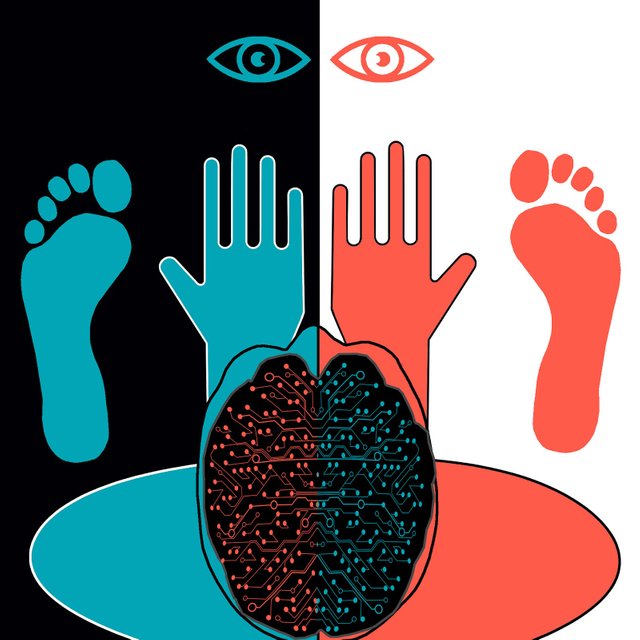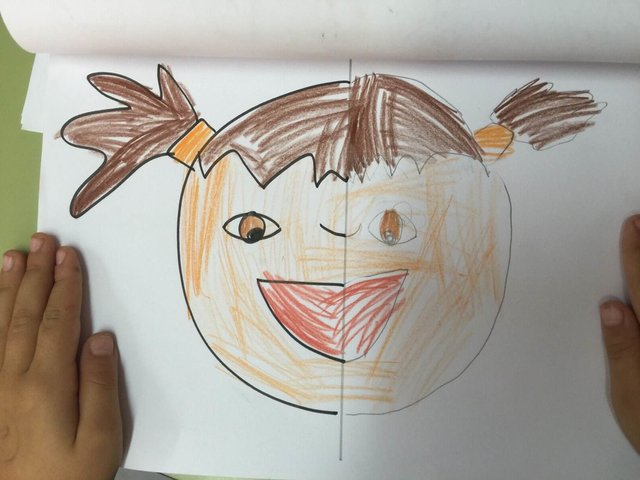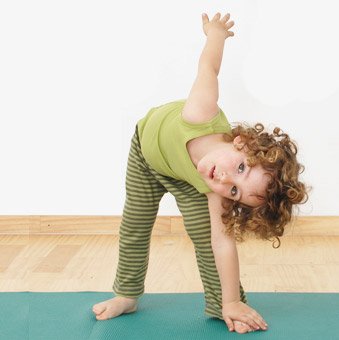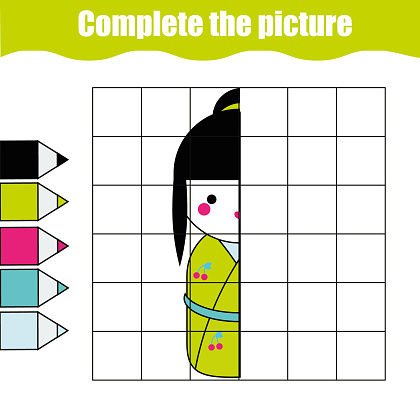The importance of defining laterality in children
Human beings are symmetrical. We have two halves, that is, two clearly differentiated sides: the right and the left. One of these sides, due, it is believed, to the cerebral domain of the opposite hemisphere, has supremacy over the other.

The laterality takes interest, because, in any of these two circumstances, it is based on the relationship, successful or not, of every person with his body and, from there, with the outside world. Although it is generally associated with the management of space and movement, the scope of laterality and its definition to the right or left are much greater
Why right or left handed?
The reasons why a person turns out to be right-handed or left-handed have not been fully clarified, although many specialists agree that laterality is inherited. The existence of left-handed parents, however, does not determine 100% of left-handed children and daughters, and instead the possibility of being right-handed: something more than 10%, for the moment
Which implies laterality
The training that leads to the fixation of the laterality of children is called lateralization. For this process to occur in a successful manner it is necessary that it be conducted without pressure. In addition, children who have already defined their laterality should not take the opposite to force them to change hands. A positive fixation of laterality is a determining factor in the lives of children, since, as already mentioned, their scope is immense, insofar as it is fundamental for the learning of literacy and the maturity of language, in which the Thorough control of the body provides emotional security and promotes high self-esteem.

On the other hand, disorders in laterality cause alterations in reading and writing, problems in spatial orientation, stuttering, dyslexia, among other difficulties. Perhaps it could still be thought that this lacks relevance, but it is known that the cases in the laterality coincide with problems of social adaptation, both in school and in the family, and hinders cognitive progress, which is reflected in poor school performance , in fearful and self-conscious personalities. Thus, when speaking of laterality one should not think that the subject is simple and that it is limited to the hand with which one writes
How to know what laterality is?
The most convenient way to know what is the laterality of our children is through prolonged observation and through some tests that serve as guidance. The important thing of any test will be to detect problematic cases, that is, those in which there is a crossed or ambidextrous laterality.

To know There are tests that can be used only as a reference, because in problematic cases it will always be advisable to go to a specialist. It is convenient to evaluate three areas to observe which side is used. The result should consider a percentage, since right-handed children will eventually use the left side or vice versa
the well-known Test of Harris that is based on that one carries out ten different actions.
Perform ten actions: 1Throw a ball
2 wind a clock
3 hit with a hammer
4 brush your teeth
5 comb your hair
6 turn the door knob
7 tighten a garter
8 cut with scissors
9 cut with a knife
10 write
What effects does it have on the school
While the children stay at home, the definition of laterality is almost invisible, the fact that little attention is paid and that, basically, in the case of some disorder, goes unnoticed. On the other hand, as soon as they enter school, which is happening more quickly, this aspect of their development immediately becomes relevant: their cognitive and social progress will be greater and faster when the fixation of laterality occurs under ideal conditions, while that the first difficulties will appear if there are disorders.

The school will definitely be the scenario in which the laterality of the children is fixed, through their first strokes and activities that help them to assert their dominant side, whether they are right-handed or left-handed. In addition, many naturally left-handed children, by imitation of the right-hand majority, force themselves to use the right hand as well. That will undoubtedly affect their learning towards the future, which can only be countered with adequate therapy. When the child does not have the established laterality, can face problems or difficulties for learning as it is related to basic functions, such as writing and reading, if the fundamental pillars are not consolidated, the learning is not assimilated properly.
What exercises to develop?
Lateralization is an indesligable process of the development of gross psychomotricity, that is, one related to the mastery of the gross segments of the body, especially the arms and legs. To that extent, in order to help our children to successfully fix, it will be essential to pay attention to their general bodily disposition and not only to what hand they use when they hold a pencil or with which they eat. The gross psychomotricity is related to activities such as walking, running, jumping, crawling, kicking, among others, whose performance must be broad, abundant and frequent.

This is extremely important and has a positive impact on the proper development of laterality. In the case of younger children, the stimulation of crawling will be fully understood, a stage that should not be missed. In fact, crawling is the first major exercise that allows children to learn to master each gross segment of the body, which is prerequisite for future and more complex physical activities. In the case of older children, it will be necessary to promote everything related to spatial notions, in oppositions between the interior and the exterior, continuity and discontinuity, right and left, forward and back, up and down, as well as the symmetries.
exercises to develop laterality
Walk on marks on the floor changing the speed
Jump on one foot and with another, with both, freely or on brands
Go up and down stairs, starting with one foot and then with the other
Kick balls freely and towards a certain direction
Walk, run or jump following an auditory signal that changes speed and rhythm
Modeling with mud, sand and other materials
Crumple papers and cards using both hands
Paint with tempera using the fingers of both hands and then using brushes
other activities to be done

Join this community
https://discord.gg/5aCpER4